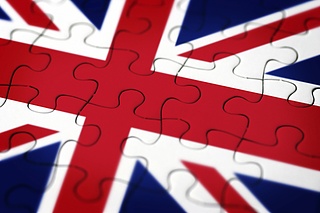EU and UK strike Brexit deal on Northern Ireland
|
Market movers today
Today we get flash inflation prints from France and Spain for February, which will give us the first indication of euro area inflation this month. Consensus looks for unchanged headline inflation in both France and Spain at 7.0% y/y and 5.9%, respectively. Given the recent rise in yields, we would likely get a bigger market reaction if it surprises to the downside than to the upside.
In the US it is time for consumer confidence from the Conference Board for February. The most interesting item currently is the 'jobs plentiful versus hard to get' difference as it tends to give a good indication of the state of the labour market. Last month it improved in line with other job indicators and the number for February may give the first hint of whether the improvement was due to mild weather or not.
We also get US house prices which will be interesting as they have declined over the past five months, but at a slower pace in the past couple of months. Finally in the US, we also get the Richmond Fed business survey.
In the Nordics, Swedish GDP for Q4 is released (see more below).
Overnight the China PMI's for February are due.
The 60 second overview
Brexit: Yesterday UK PM Rishi Sunak and European Commission President Ursula von der Leyen announced a deal on the Northern Ireland Protocol (NIP). The NIP tackles the post-Brexit issue of implementing an EU-border between the Republic of Ireland and Northern Ireland, which would violate the peace agreement from 1998, all the while still keeping the British inner market intact. While a date is not yet set for the UK Parliament to vote on the deal, it is at present expected to receive the necessary backing as Conservative MPs are faced with the alternative of another possible collapse of a Conservative government and a continued stalled political process in Northern Ireland. Markets took the deal as a positive sign and EUR/GBP moved notably lower during yesterday's session. We assess the further market impact to be limited on UK assets with the outlook of the tail risk of a EU-UK trade war to be eliminated.
Equities: Equities were higher yesterday with Europe leading and continuing its outperformance. Cyclicals in a strong beat of defensives with the defensive bracket of healthcare, utilities and consumer staples all lower in US yesterday. This type of rotation is what we expect to see on days like yesterday where the central bank reprising is taking a pause. This also fits with our strategy as we argue that the central bank reprising is to a large extent behind us now. In US yesterday, Dow +0.2%, S&P 500 +0.3%, Nasdaq +0.6% and Russell 2000 +0.3%. Asian market are mixed this morning with very small moves and the same goes for European and US futures.
FI: Markets added 4bp to the ECB peak policy rate putting pressure on the rest of the European curve. Markets are pointing to almost 4% deposit rate now. 10y German bunds rose 4bp to 2.58%, which is the highest level since 2011. At the same time, longer dated bonds underperformed, with 10s30s EUR swap steepening 3bp. Peripheral bonds performed against core rates. Focus today is on the French and Spanish inflation figures ahead of Thursday's euro area flash HICP inflation.
FX: Yesterday was rather quiet without any significant key drivers for market moves. USD broadly softened a bit and EUR/USD is hovering around 1.06. EUR/GBP moved lower on the back the Northern Ireland Protocol deal and is now trading below the 0.88 mark. EUR/SEK is around 11.02 and EUR/NOK around10.98.
Credit: Credit markets took part in the upbeat sentiment in risky assets yesterday where iTraxx Xover tightened 9bp and Main 2bp, with the two indices closing in 411bp and 79bp, respectively. Primary was relatively quiet, but a couple of issuers did take advantage of the positive backdrop, with e.g. Intesa Sanpaolo pricing a EUR2.25bn dual-tranche, green SNP.
Nordic macro
The regular Q4 GDP is released in Sweden this morning, after the preliminary GDP indicator printed -0.6% q/q. Monthly indicators have suggested consumption, net export and inventories were a drag on growth, while production and employment seem to have continued up. A very bad outcome may of course temper Riksbank a bit. January trade balance and PPI will also give us a first shot of how foreign trade might have affected Q1.
Information on these pages contains forward-looking statements that involve risks and uncertainties. Markets and instruments profiled on this page are for informational purposes only and should not in any way come across as a recommendation to buy or sell in these assets. You should do your own thorough research before making any investment decisions. FXStreet does not in any way guarantee that this information is free from mistakes, errors, or material misstatements. It also does not guarantee that this information is of a timely nature. Investing in Open Markets involves a great deal of risk, including the loss of all or a portion of your investment, as well as emotional distress. All risks, losses and costs associated with investing, including total loss of principal, are your responsibility. The views and opinions expressed in this article are those of the authors and do not necessarily reflect the official policy or position of FXStreet nor its advertisers.